Industry News
In Canada, drones are used for a variety of purposes including aerial photography, search and rescue missions, environmental monitoring, and hazardous material detection.
Model Aviation Association Canada Exemption No Longer Valid.
All Model Aircraft fixed wing, drones and control line aircraft are now considered RPAS, and all pilots of these aircraft will now require the Transport Canada Basic Certificate(minimum) to fly their aircraft in Canada.
This was announced over the weekend by MAAC. in an Email to its current and past members
To unlock the potential of medium-sized drones and beyond visual line-of-sight (BVLOS) operations in Canada, regulatory changes were needed. The new regulations allow medium-sized drone operations and some beyond the visual line-of-sight operations without the need for a Special Flight Operations Certificate (SFOC-RPAS).
Canada’s expanded drone regulations introduce Low Level Complexity 1 BVLOS Operations
- New pilot and operator certification for lower-risk beyond visual line-of-sight operations
- Expanded privileges for advanced pilots to fly sheltered operations and extended visual line-of-sight (EVLOS) operations
- New rules for flying medium drones (over 25 kg up to 150 kg) within visual line-of-sight (VLOS)
- New technical standards for drones and any supporting systems flying advanced, complex or special flight operations
- New requirements for flying microdrones at advertised events
- New and updated fees for services provided by Transport Canada
Two phases for coming into force
The new regulations will come into force in two phases to give stakeholders time to get their appropriate training, certification, and to familiarize themselves with the new rules.
You cannot start flying BVLOS, EVLOS, or Sheltered operations until November 4, 2025.
However, you will be able to take the new Level 1 Complex exam and apply for an RPAS Operator Certificate (RPOC) through the Drone Management Portal starting April 1, 2025.
This approach avoids changing operating rules during the peak summer flying season in 2025. If you want to fly these types of operations before November 4, you still need to apply for a Special Flight Operations Certificate.
New and updated web pages and official publications (TPs, Standards, and Advisory Circulars) will be made available starting on April 1, 2025.
Lower-risk beyond visual line-of-sight (BVLOS)
The new regulations introduce a new pilot certification process for lower-risk BVLOS called Level 1 Complex Operations. To conduct lower-risk BVLOS, you must:
- Be at least 18 years old
- Pass the online exam for advanced and Level 1 Complex Operations
- Complete at least 20 hours of ground school and successfully pass a flight review
Individuals, businesses, and organizations wishing to conduct BVLOS operations must have an RPAS Operator Certificate (RPOC). To obtain an RPOC, pilots, businesses, and organizations will be required to have policies and procedures in place that reflect the size and complexity of the operations they will carry out.
Drones are a new generation of aircraft in a growing part of the aviation industry.
As drones become more commonplace, it has become clear they are a game-changing technology not only within the transportation network but for society at large. Drones are modernizing the way industries work, improving people’s lives, and providing public benefits to communities. Most recently, drones have been used to conduct deliveries to remote communities and have helped respond to COVID-19.
Our vision is for drone operations to be safely and securely integrated into Canadian skies as part of a modern national civil aviation system. Since 2015, we have been working towards this vision by collaborating with industry and other partners on Research & Development (R&D) activities, pilot projects to test technologies, and developing regulations and standards to ensure drones are used safely.
Through this work, we identified challenges and opportunities that will inform five key priorities:
Supporting Innovation Through Safety Regulations
Our top priority is developing regulations for lower-risk Beyond Visual Line Of Sight (BVLOS) operations in rural and remote areas. We will also be conducting technology R&D, testing, and authorizing pilot projects that will inform our policies and rules for medium-risk drone operations.
Managing Drone Traffic
Establishing a drone traffic management system in Canada is a long-term effort. Building on the first phase of traffic management trials launched in 2020, in the medium-term we will launch additional operational trials. This includes exploring options to remotely identify drones to ensure accountability of drone operators.
Understanding and Addressing Drone Security Risks
We are at the early stages of collectively understanding the security threats and risks posed by drones at airports and other critical infrastructure. Our activities will first focus on the aviation sector and include:
- collaborating with stakeholders to clarify security responsibilities
- exploring counter-drone technologies to effectively address unauthorized drone incursions at airports
- introducing security regulations and standards to detect and remove drones
Supporting Economic Growth
Unlocking the economic potential of the drone sector depends on continued rapid progress in technology development and testing. We will continue to pursue partnerships to advance drone R&D both in Canada and globally, and will prioritize those projects relevant to the Canadian environment. Our activities include:
- developing strategies to enable cutting-edge drone technologies prepare for international markets
- working with stakeholders to develop an economic strategy to modernize the current framework, including air carrier licensing rules
- supporting the growth of the drone sector in Canada
Increasing Public Trust in Drones
Building public trust in drone technology is essential to success. This will involve:
- increasing our own understanding of public perception and acceptance of drones
- continuing to communicate with the public and encouraging engagement by Indigenous communities
- work with different levels of government to plan for urban operations
- expand partnerships with the law enforcement
Where you will be able to fly BVLOS
All lower-risk BVLOS operations must
- remain in uncontrolled airspace
- stay below 122 metres (400 feet)
- stay away from airports and aerodromes
If you are flying a small or medium drone, you may operate at least 1 km away from a populated area.
If you are flying a small drone, you may also operate over a sparsely populated area or less than 1 km from a populated area.
Expanding privileges for Advanced Pilot Certificates
As of November 4, 2025, the following drone operations will be permitted for pilots with a Pilot Certificate – Advanced Operations:
- Sheltered operations
- Extended visual line-of-sight (EVLOS) operations
- Medium drones within VLOS
If you already hold a Pilot Certificate – Advanced Operations today, you do not need to re-apply for your certificate, however you do need to familiarize yourself with the new operating rules. And make sure you keep your certificate current!
Sheltered operations
Sheltered operations are flights with a small drone that are close to a structure, such as a building. To conduct sheltered operations, you must fly the drone:
- More than 30 metres (100 feet) away from people not involved in the operation
- No greater than 30 metres (100 feet) above the structure
- Less than 61 metres (200 feet) horizontally from the structure
Extended visual line-of-sight (EVLOS) operations
EVLOS operations are short-range flights with a small drone, but where the drone is far away enough from the pilot that it cannot be seen by an unaided eye. To conduct EVLOS, you must:
- Remain in uncontrolled airspace
- Fly more than 30 metres (100 feet) away from people not involved in the operation
- Receive assistance from a trained Visual Observer (VO) holding an RPA pilot certificate
- Fly the drone within 2 nautical miles (3.6 km) of yourself, the VO and the Control Station
Medium drones within VLOS
To fly your medium drone within VLOS, the drone must be declared as safe and able to perform the specific advanced operations that you want to conduct. You can fly medium drones in uncontrolled airspace or in controlled airspace with permission from air traffic control.
New requirements for microdrones at advertised events
As of April 1, 2025, an SFOC will now be required to fly microdrones at advertised events.
New and updated service fees for services provided by Transport Canada
Introducing fees for new exams, certificates, and declarations.
Canadian Drone Industry: The Latest Developments as of August 11, 2025
1. Transport Canada Greenlights Avalanche Control Drone Tech
AVSS, a Canadian drone-tech specialist, has secured nationwide approval for its SnowDart™–based avalanche management system. Through a Special Flight Operations Certificate (SFOC), AVSS’s Precision Avalanche Management System (PAMS) is now cleared to deploy SnowDarts™—low-cost, reactive aerial devices—for automated avalanche mitigation. The system also captures detailed data for performance analysis and future planning.
2. Royal Canadian Navy to Adopt Uncrewed Aerial Systems
In a major boost for Canada’s sea-based drone capacity, the government awarded MDA Space contracts to equip Halifax-class frigates with up to six Uncrewed Aircraft Systems (UAS). The initial deal, valued at roughly CAD 39 million (plus CAD 27 million for five years of support), will enhance long-range surveillance and targeting. This ISTAR-UAS initiative is projected to generate $18 million annually in GDP and sustain around 145 jobs each year. Initial operational capability is expected by 2028, with full deployment by 2032.
3. Looking Ahead: Finalized BVLOS Drone Regulations
Canada continues to lead globally on modernizing drone rules. Final regulations issued in early 2025 will allow routine Beyond Visual Line-of-Sight (BVLOS) operations—without requiring an SFOC—for lower-risk missions involving drones up to 150 kg, flying at low altitudes in sparse, uncontrolled airspace. The full implementation begins November 4, 2025, following a phased rollout.
4. Fixed-Wing Military Drones: A Long-Term Deployment
Canada has invested in MQ‑9B SkyGuardian drones—long-endurance, armed UAVs—to bolster military capability. Production has started on the first two units, with testing scheduled for 2026 and full delivery anticipated in 2028–2029. Operational deployment, however, is projected to stretch into the early 2030s.
